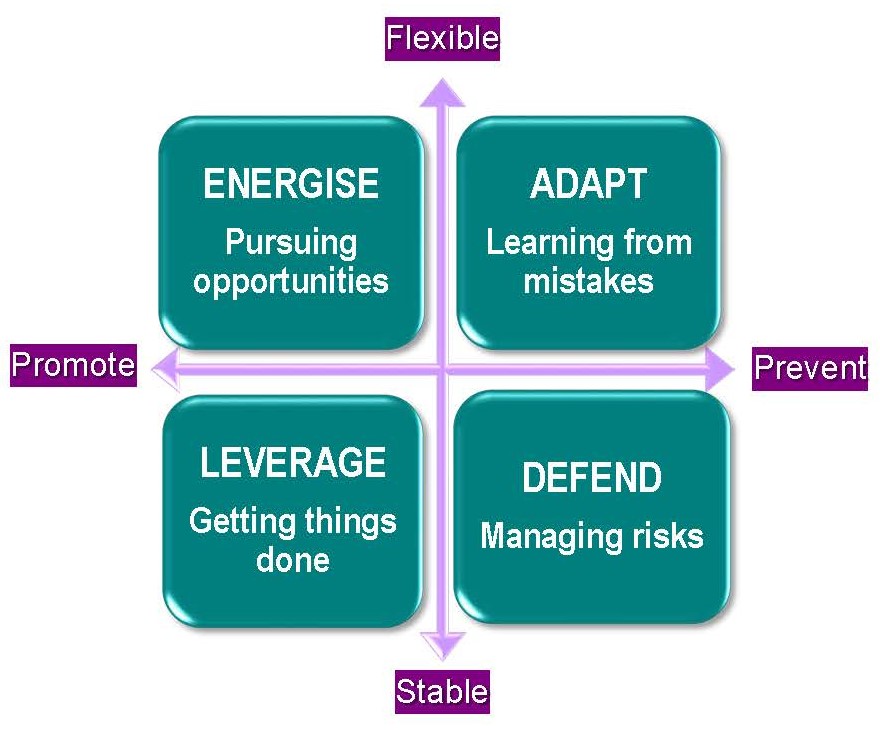The LEAD model
The LEAD model brings together many different theories of safety leadership into one practical framework that you can apply in your place of work. It describes specific skills you need for different work situations.

Developed by the Office of Industrial Relations, Curtin University and the University of Queensland, the LEAD model offers organisations an evidenced-based approach to measure, understand and improve safety leadership capacity.
An effective safety leader will:
- leverage—provide clarity and fairness
- energise—provide meaning and purpose
- adapt—learn from mistakes and improve
- defend—be vigilant and manage work health and safety risks.
Work can be sorted into four different situations:
- getting things done
- pursuing opportunities
- learning from mistakes
- managing risks.
The LEAD model encourages us to be flexible and adaptable with our safety leadership—adopting the best mode of safety leadership for each work situation.
- Leverage is used to get things done.
- Energise is used to pursue opportunities.
- Adapt is used to learn from mistakes and failures.
- Defend is used to perform high risk work.
Safety goals
The LEAD model gives four ways that leaders can frame safety goals:
- Flexibility—encourage your team to accept responsibility and ownership for work health and safety. Support them when they voice concerns, share ideas, and accept safety duties; or
- Stability—when work is routine and hazards are well known, you should use behaviours that promote stability within your team.
- Prospering—set specific objectives for your team to strive to achieve, and recognise or reward your team when they achieve a positive safety outcome; or
- Protection—focus on preventing negative outcomes by highlighting risk, implementing controls and avoiding risk taking.
How to use the LEAD model
The LEAD model is based on the idea that leaders can frame safety goals in different ways depending on the situation, and that this can have a positive affect on workers' behaviours.
For example, when hazards are well-known, the situation is predictable, and the focus is on getting work done, leaders should:
- set specific safety goals to strive for
- recognise workers’ progression towards these
- encourage effective communication and coordination among the team.
Two toolkits are currently available:
- All industry: providing a range of tools and resources to enable businesses of any size and industry to improve their safety leadership. The resources for all industry can be accessed via the tabs below.
- Electrical industry: The Electrical Safety Office (ESO) is working proactively with the electrical industry and has developed a toolkit specific to their needs. The toolkit includes a workbook, electronic survey, survey user guide, workshop presentation, facilitation guide and speaker notes. Request the Electrical LEAD safety leadership toolkit.
The LEAD safety leadership toolkit provides support when implementing the LEAD model in your place of work.
The toolkit provides a suite of resources including:
Work through this resource to develop an understanding of the LEAD model and safety leadership and to learn new skills and concepts to apply at work. The workbook is aimed at frontline safety leaders and workers in informal leadership roles or seeking promotion.
LEADing for Frontline Safety Self-Paced Workbook (PDF, 0.36 MB)
Hear from safety leaders sharing their experience building and maintaining a positive safety culture in their workplace.
Small business owners have a vital role to play when it comes to leading safety. A positive safety culture can help small business owners avoid costly incidents and injuries, minimise productivity disruptions and reduce overheads.
Safety leadership in small business fact sheet (PDF, 0.47 MB)